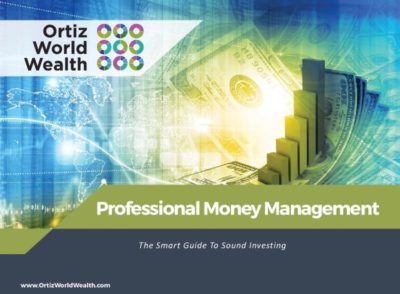
02 Oct How To Protect Your Retirement Income
Those that have worked hard and saved for retirement deserve to enjoy their golden years without having to worry about outliving their savings. With growing inflation, high life expectancy and low yield on stocks, deploying strategies and tactics that will produce constant growth and hedge against market risks are critical in retirement.
Here are five smart tactics to help protect your investments and income in retirement:
Buy long-term care insurance
Advances in medicine and patient care are making it easier for people to live longer, but as lifespan increases so too is the cost of health care, especially the cost of long-term care. One study found that an average couple retiring in 2018 will need more than $270,000 to cover the cost of health care in retirement — which does not include the cost of long-term care (people with longer lifespans should expect to spend more).
The U.S. Department of Health and Human Services estimates that 70% of people aged 65 and above will need some form of Long-term care in retirement. A survey conducted by Genworth in 2017 found that average home health care services cost about $130 per day and assisted living facilities can cost upwards of $40,000 per year.
To mitigate the risks of high long-term care costs you should consider buying long-term care insurance (LTC). Since most insurers base cost of premiums on age, it’s advisable to enroll in a health insurance program when you’re younger — which will help reduce the cost of your premiums. Another way to reduce health care costs is to make use of a health savings account (HSA) if your employer offers one. An HSA allows you to save pretax dollars, which you can withdraw tax-free if you’re in retirement or if you plan to use for qualified medical expenses.
Restructure your investment
Most experts agree that investing in high yield, risky securities is dangerous, but so too is investing conservatively or holding your money in cash. High yield securities can produce strong returns in bull markets but can hurt your portfolio if the market crashes. On the other hand, conservative securities such as bonds can offer fixed-income returns and favorable tax treatment, but with an all-time low yield on bonds, putting too much money into bond markets can have a devastating effect on your portfolio if inflation were too skyrocket
The answer to protecting your investments against market volatility and high inflation lie in rebalancing your portfolio to better reflect your risk tolerance and what you hope to achieve with your investments. With retirement that may last two decades or longer, you need to invest in securities that offer significant growth potential and yield opportunities.
Plan for longevity
With growing lifespans and a health-conscious society, a 60-year old today can expect to live to 80 or 90. So it’s important to build a savings that will last for at least 20 or 30 years in retirement. You can easily outlive your savings if you don’t take longevity into account and relying on family or social security for sustenance can be a risky proposition at best. With the current social security benefit at a little over $1,300 a month, it can be very hard to get by with social security alone. To avoid running out of money in your golden years due to high life expectancy you should consider buying an annuity. An annuity can help you cover some of the costs that may arise as a result of longevity. Some Annuities also offer guaranteed income for life, which provides an additional peace of mind if something goes wrong.
Tackle inflation
Inflation can significantly reduce your ability to pay for future goods and services if you don’t account for it properly. An annual inflation rate of just 1% can severely reduce your purchasing power if your investments yield lower returns. By investing in the right mix of stocks, bonds and inflation-protected securities, you can mitigate the risks of inflation. If you’re willing to put in the time and effort to monitor your investments, you should be able to contain the impact of inflation while growing your income.
Employ the bucket strategy
The bucket strategy, if structured properly, can help reduce longevity and financial market risks. The strategy entails allocating assets between risky buckets for high returns and safe buckets for liquidity and safety needs.
To make the most of your bucket strategy you need to set it up sooner rather than later. The first bucket should contain assets for your immediate cash-flow needs, say one or two year’s expenditures. Since this bucket will provide for your immediate cash requirements, it should be invested in low-risk securities where you can gain quick access to your money with little or no chance of depreciation.
The second bucket usually contains assets for long-term living costs, typically 3 to 10 years. The assets should be invested in high quality, low-risk securities such as bonds to meet your annual spending needs. This helps protect your portfolio against downturns and provide you with stable income over the course of 10 years. Note that this strategy works best when bonds are held to maturity.
The third bucket should contain assets for your long-term needs or legacy funds. This should be invested in 100% equities for a long period of time. The purpose of this bucket is to generate high returns — but that doesn’t mean you should invest recklessly, rather it’s an opportunity to spread your funds to a diverse mix of asset classes that are safe and high yielding. Keeping costs low while investing in asset classes that offer high returns is a recipe for success when investing for long-term goals. Employing the bucket strategy is a great way to increase your retirement portfolio and to ensure you don’t run out money in your golden years.
Were here to help
Protecting your investments and ensuring that you do not outlive your savings is critical, and getting a second opinion from a fiduciary advisor can positively impact your portfolio for years to come. Feel free to reach out to us for a no pressure complimentary consultation so that we can assess your needs – or consider registering to attend an upcoming retirement seminar.




No Comments